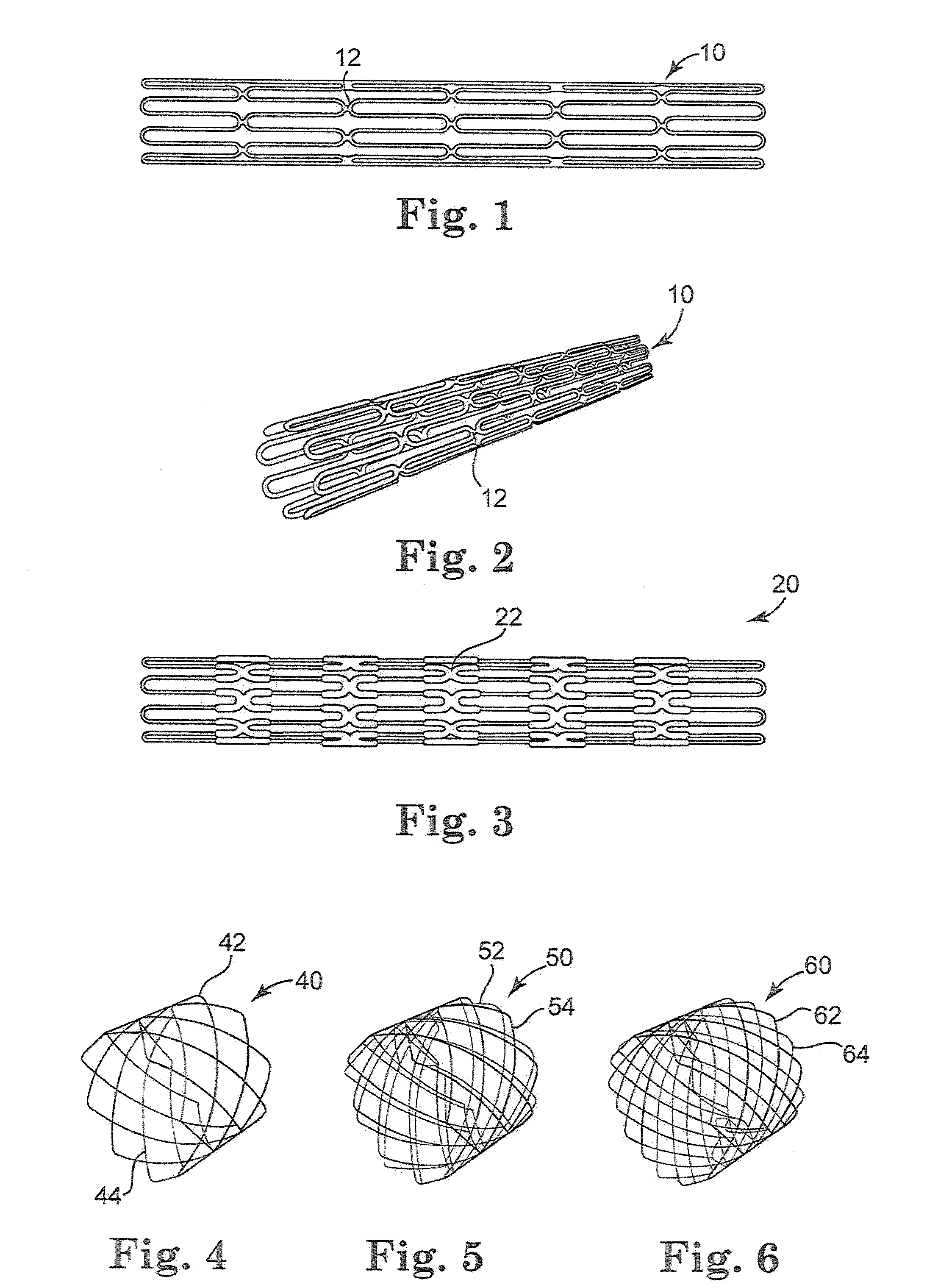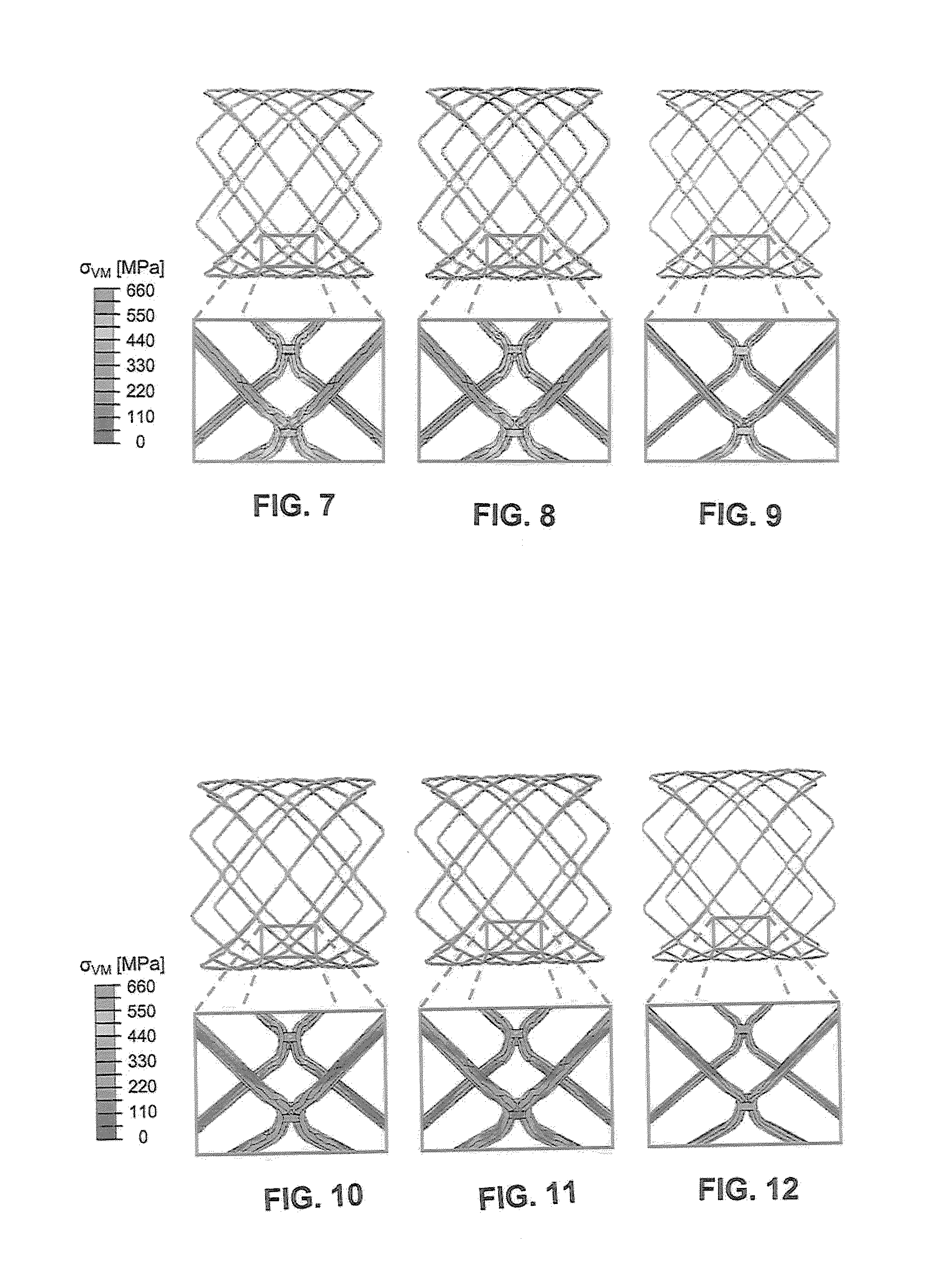Multi-layered stents and methods of implanting
a stent and multi-layer technology, applied in the field of stents, can solve the problems of increasing the chance of a stent fracture occurring, affecting the normal functioning of the heart, and affecting the safety of patients, so as to promote or limit tissue ingrowth, limit or prevent the effect of restocarditis, platelet pannus, and/or thrombosis
- Summary
- Abstract
- Description
- Claims
- Application Information
AI Technical Summary
Benefits of technology
Problems solved by technology
Method used
Image
Examples
Embodiment Construction
[0033]The properties of stents involved in the design of multi-layered stent constructions of the invention, which may be used for percutaneous pulmonary valve implantation, for example, desirably involve a compromise between interrelated and sometimes contradictory material and geometric properties of multiple stents. That is, the designs and materials selected for each of the stents of the multiple stent structures of the present invention are independently chosen to achieve certain desired overall performance characteristics for the stent. While the description and figures contained herein are primarily directed to two-layered stents, it is understood that multiple-layered stent structures having three or more stents are also contemplated by the invention, where some or all of the stents may be attached or connected in some way to at least one adjacent stent.
[0034]Referring now to the Figures, wherein the components are labeled with like numerals throughout the several Figures, a...
PUM
| Property | Measurement | Unit |
|---|---|---|
| Fraction | aaaaa | aaaaa |
| Fraction | aaaaa | aaaaa |
| Fraction | aaaaa | aaaaa |
Abstract
Description
Claims
Application Information
 Login to View More
Login to View More - R&D
- Intellectual Property
- Life Sciences
- Materials
- Tech Scout
- Unparalleled Data Quality
- Higher Quality Content
- 60% Fewer Hallucinations
Browse by: Latest US Patents, China's latest patents, Technical Efficacy Thesaurus, Application Domain, Technology Topic, Popular Technical Reports.
© 2025 PatSnap. All rights reserved.Legal|Privacy policy|Modern Slavery Act Transparency Statement|Sitemap|About US| Contact US: help@patsnap.com



